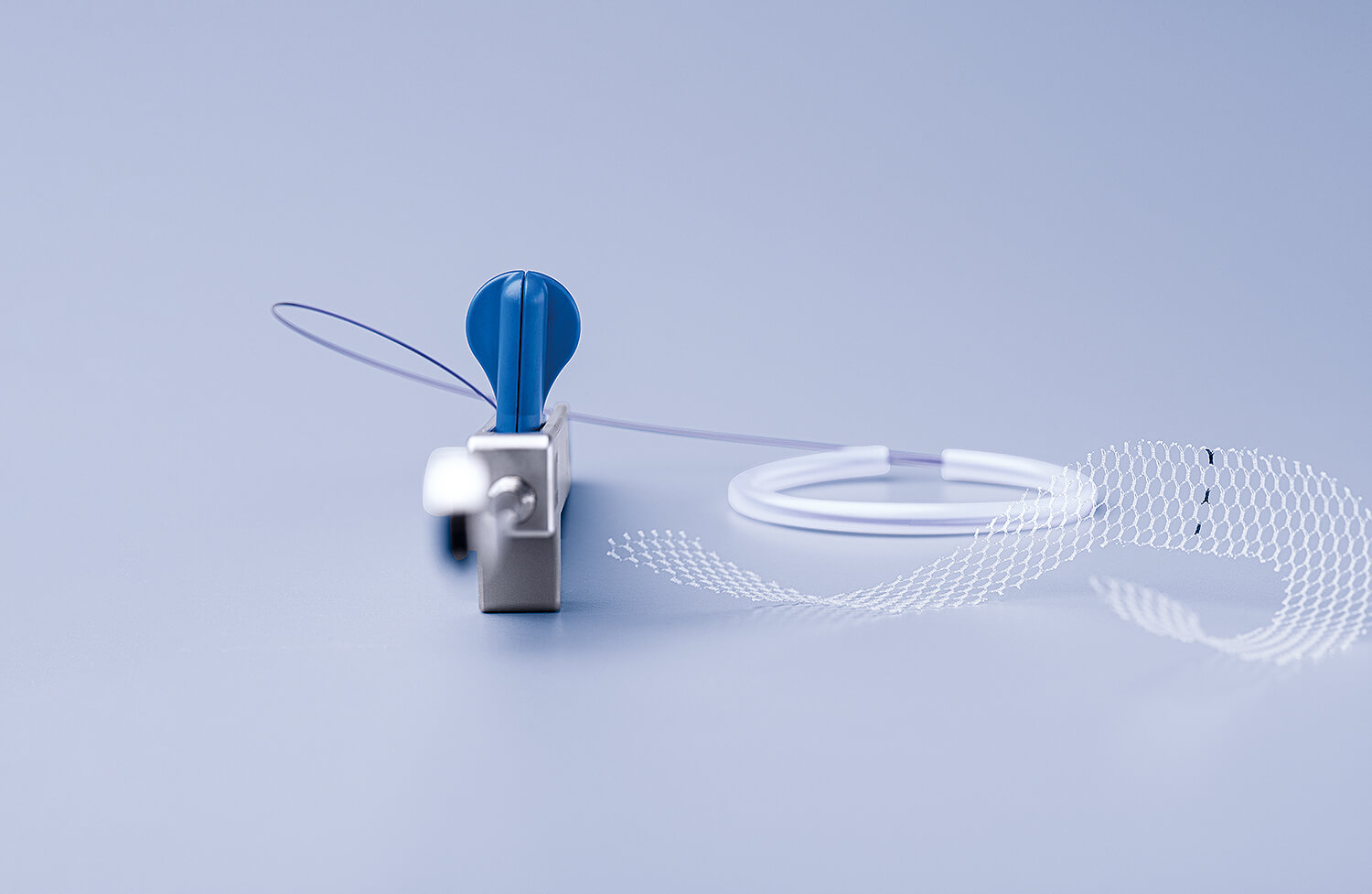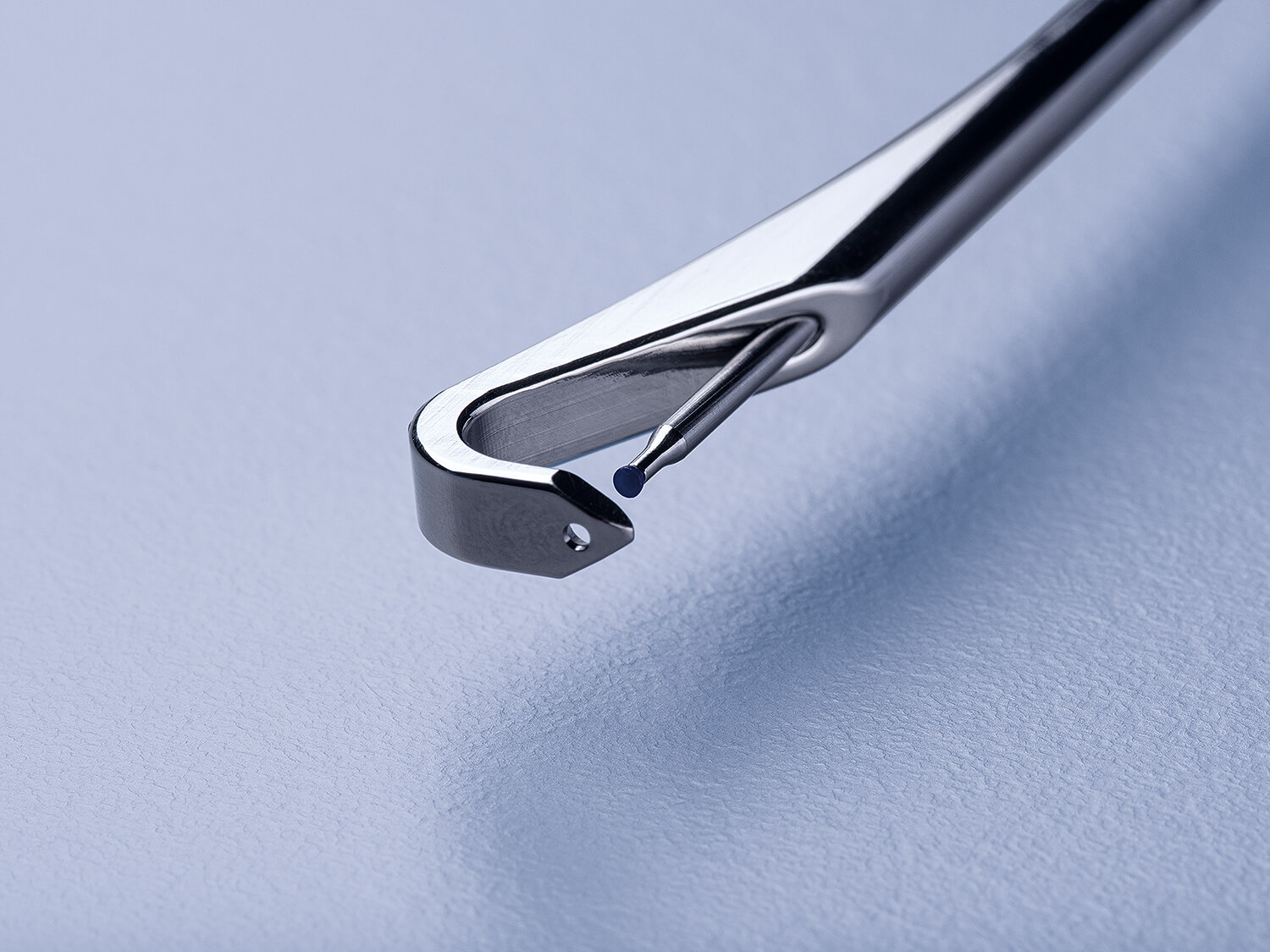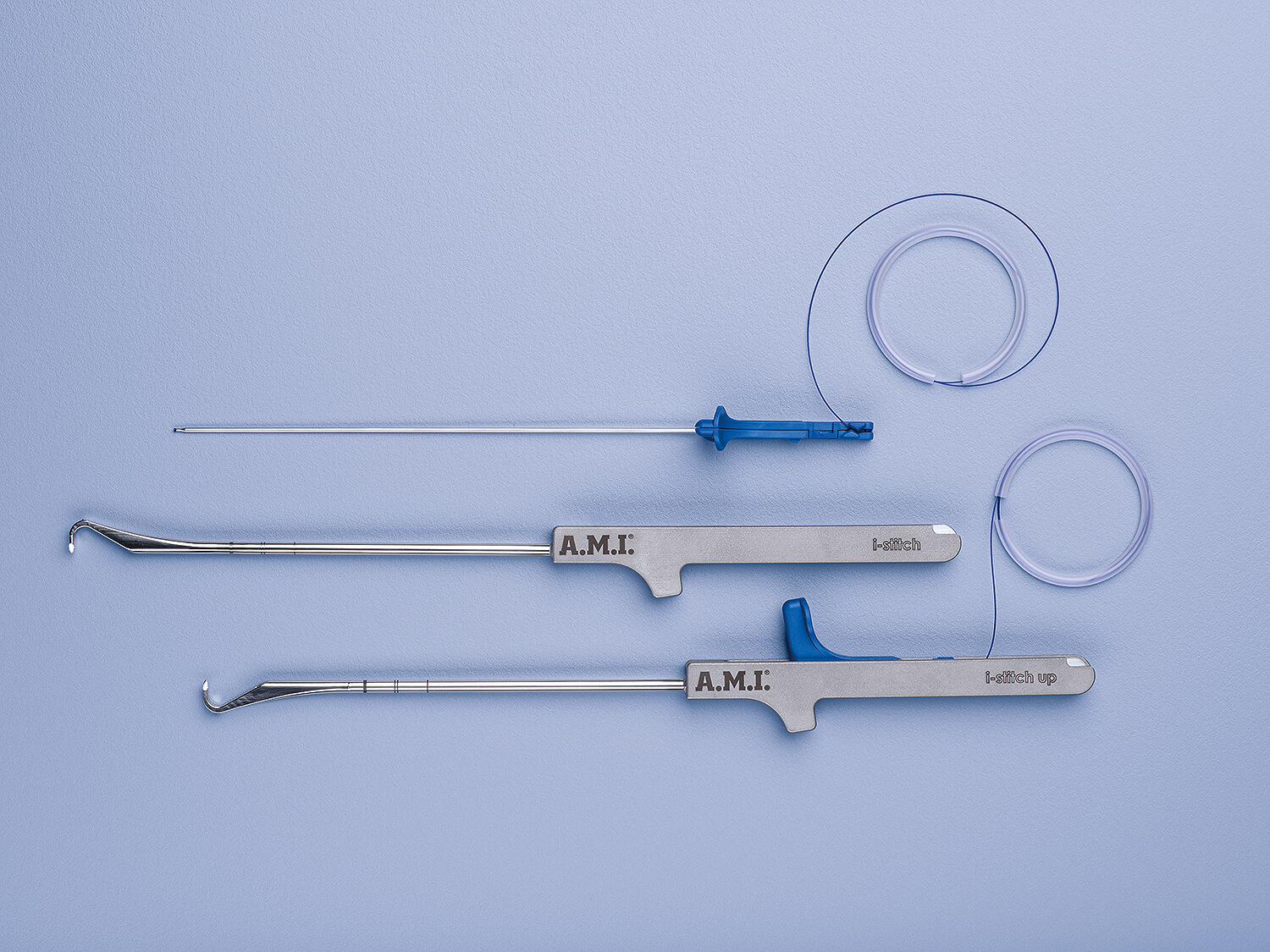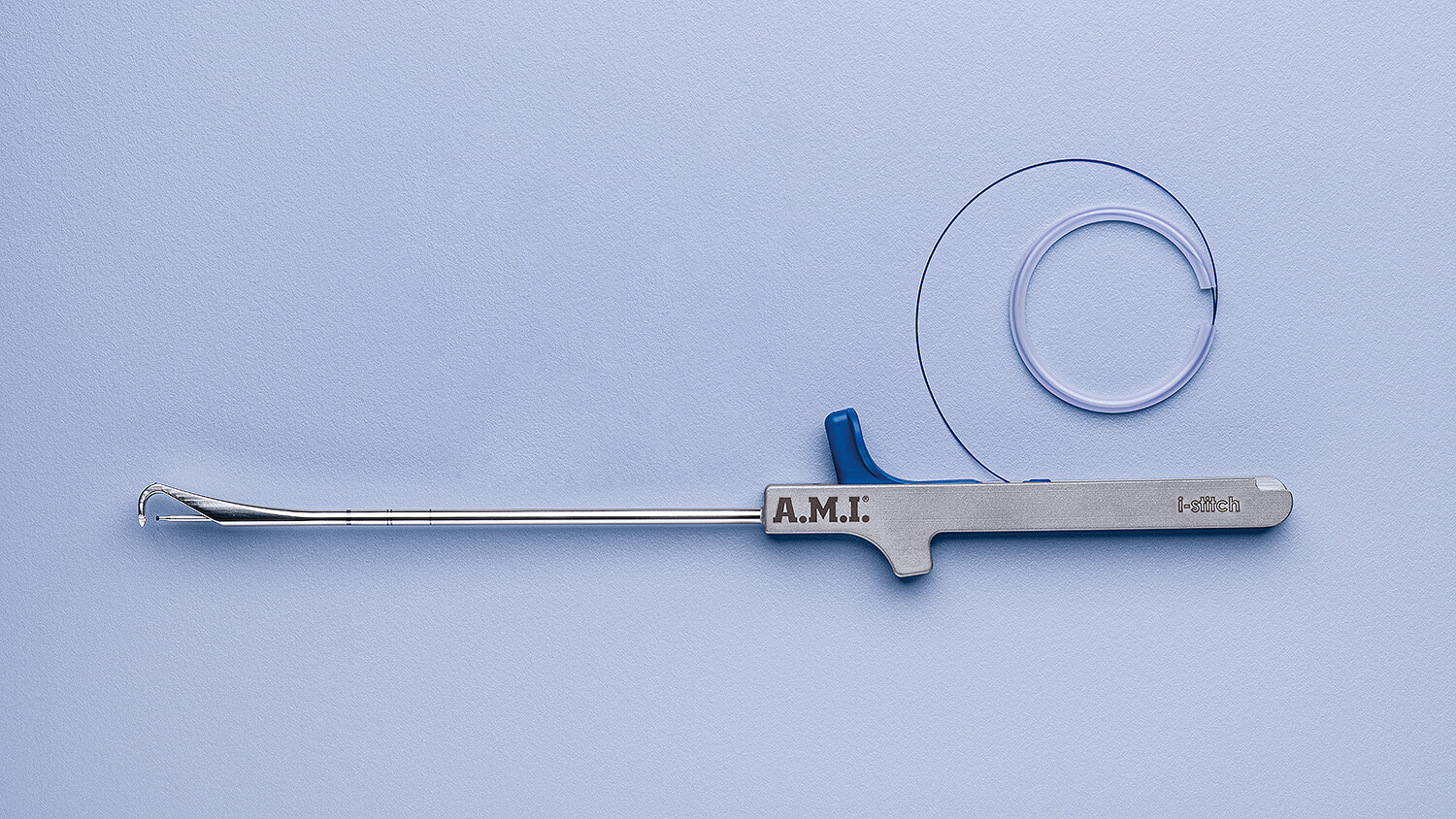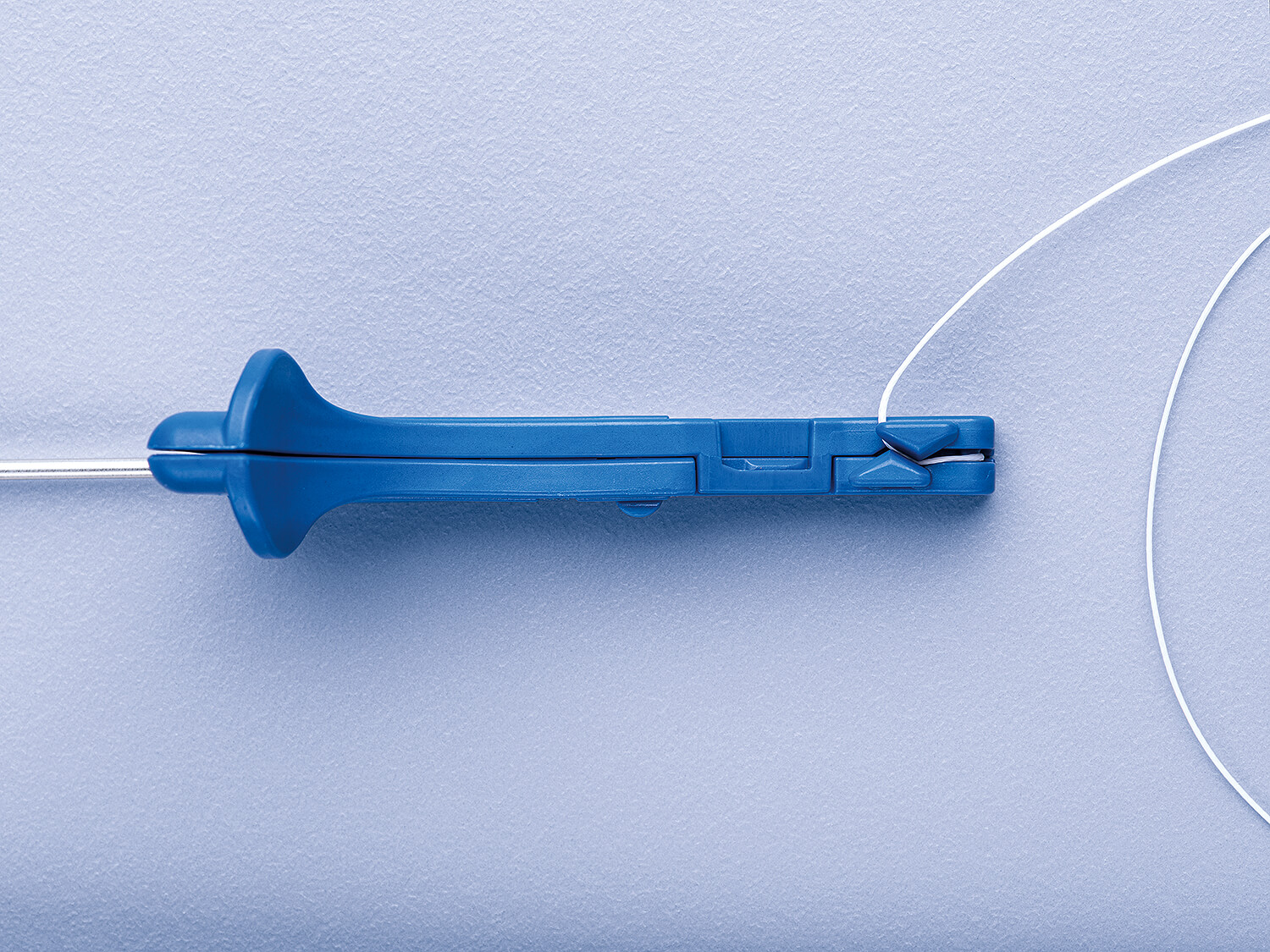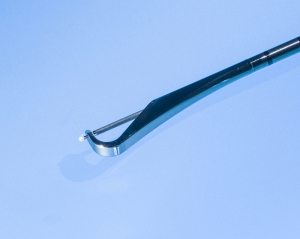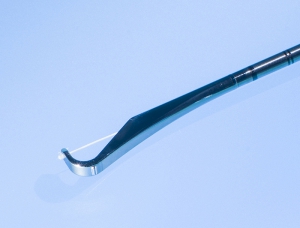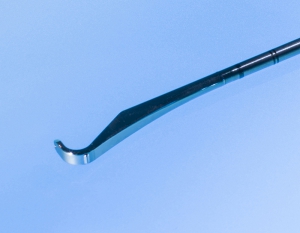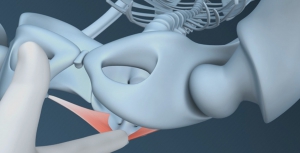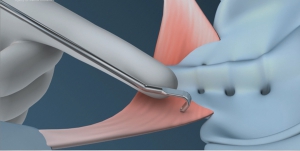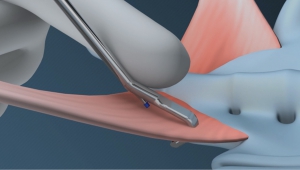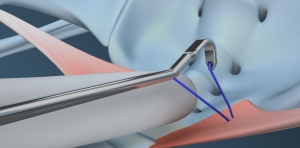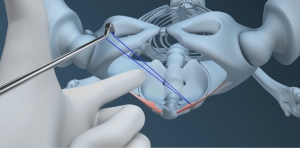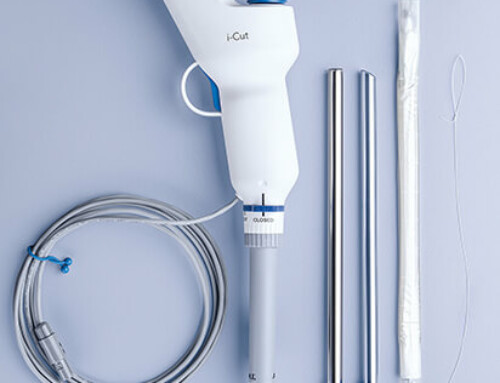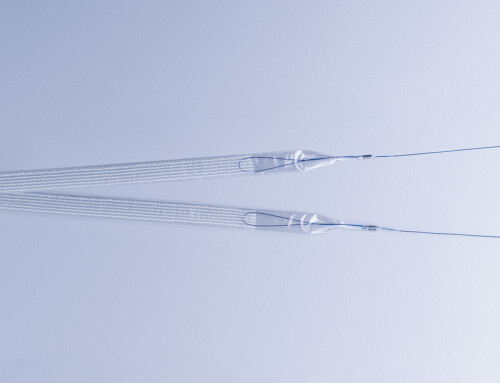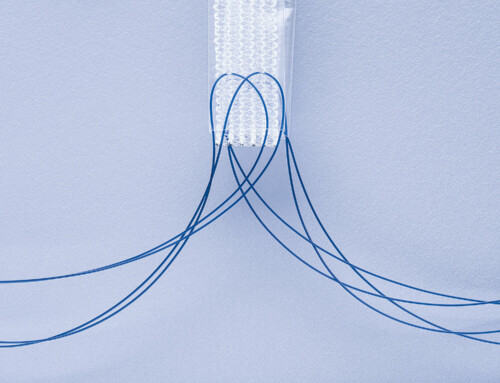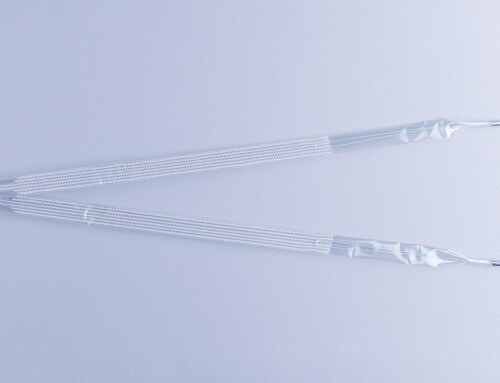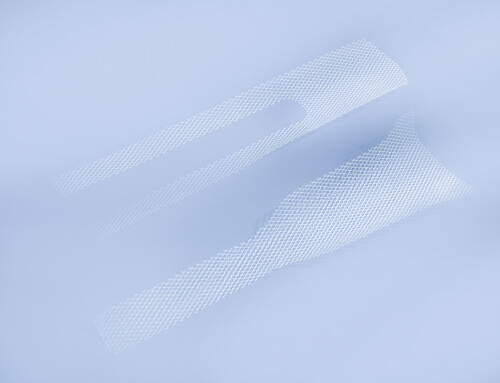Fixation rapide et sûre des sutures dans les zones difficiles d’accès
- Idéal en combinaison avec les prothèses A.M.I. pour la reconstruction du plancher pelvien (par ex. InGYNious)
- Pour sacrospinofixation (Selon Amreich / Richter)
- Deux modèles d’instruments pour faciliter la fixation aux structures dans toutes les directions
- Matériau de suture résorbable et non-résorbable
Avantages de l’i-Stitch :
Fixation en 3 étapes simples :
L’instrument i-Stitch d’A.M.I. permet une fixation rapide et efficace des sutures aux tissus, en particulier dans les zones difficiles à atteindre, telles que la région postérieure du ligament sacro-épineux. L’i-stitch, d’un fonctionnement simple, a été conçu pour être utilisé d’une seule main.
- 2. Pousser la cartouche à travers les tissus
- 3. Retirer l’aiguille, la suture reste en place dans les tissus
- 1. Positionner la pointe de l’instrument
Une fois équipé de la cartouche jetable, comprenant un curseur à actionner avec le pouce, un distributeur, une aiguille creuse et un matériau de suture spécialement formé, l’instrument réutilisable est prêt pour la fixation de la suture en seulement trois étapes simples. Une fois postionnée à l’endroit voulu, la pointe de l’i-Stitch est pressée contre le tissu jusqu’à ce qu’elle y pénètre. L’aiguille creuse, pré-chargée d’une suture, est ensuite poussée jusqu’à ce que l’extrémité arrondie de la suture traverse la pointe de l’instrument. On entend alors un clic, l’aiguille creuse peut être retirée et l’instrument désengagé du tissu avec précaution.


